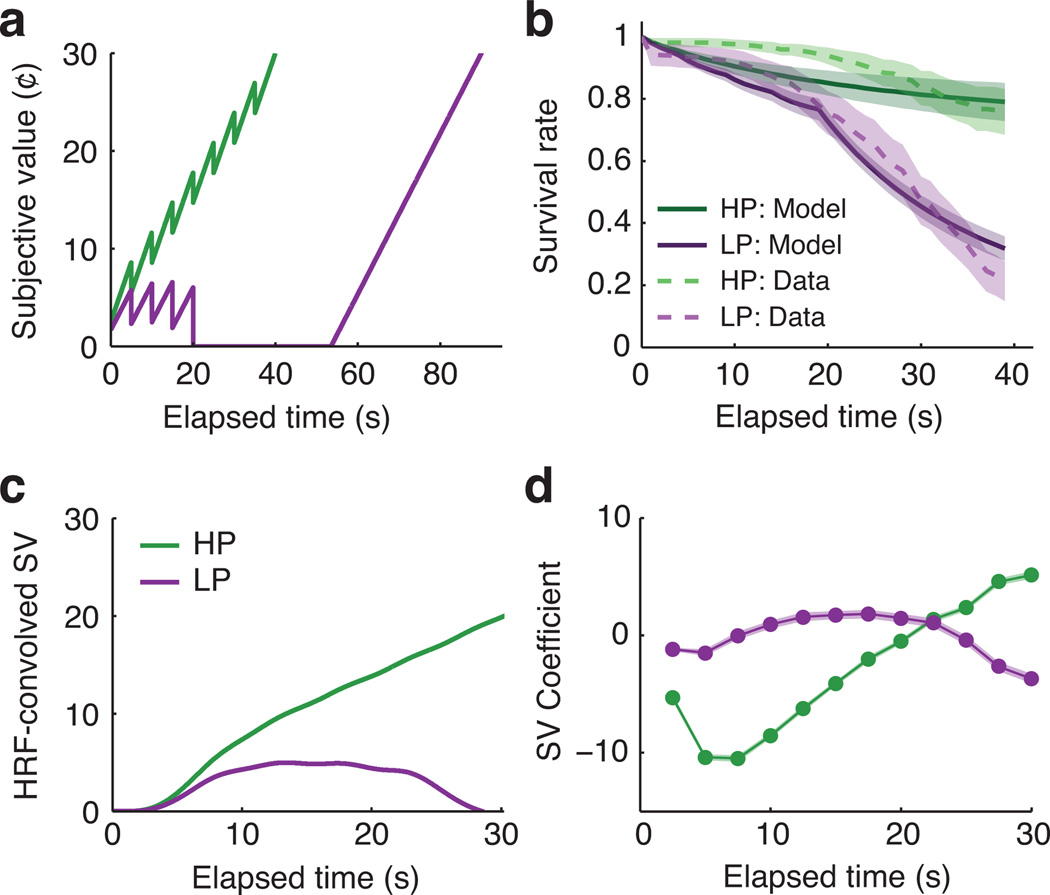Figure 3.
Theoretical subjective value of the awaited token as a function of elapsed time in each environment. A: A token's subjective value increased over time in the HP environment but not in the LP environment. These timecourses are based on the discrete ground-truth timing distributions and would be smoothed by subjective temporal uncertainty. B: Simulated behavior from a model in which subjective value linearly influenced the log-odds of continuing to wait (mean +/− SEM of subject-wise model fits). Data from Fig. 2a are overlaid for reference. C: Subjective value timecourses convolved with a canonical hemodynamic response function (HRF). D: Predicted BOLD timecourses obtained by applying our fMRI analysis to idealized synthetic data (mean +/− SEM of individual subject results). Visual differences from Panel C reflect that (1) the HP and LP environments had independent baselines, and (2) there was a small degree of carryover across trials. In spite of these differences the theoretical difference timecourses (HP minus LP) were highly correlated between Panels C and D (median r2=0.88, IQR 0.84 to 0.89).

